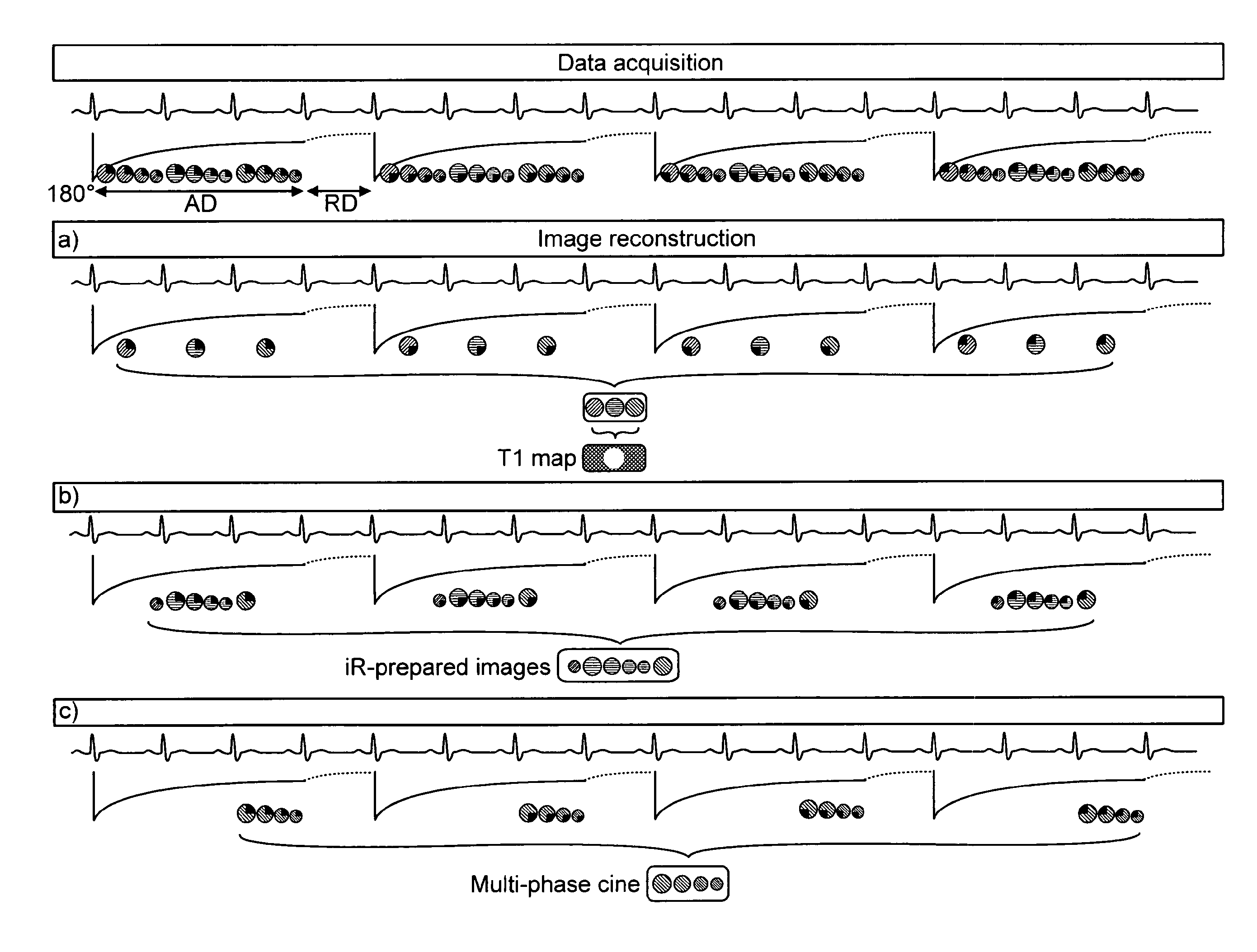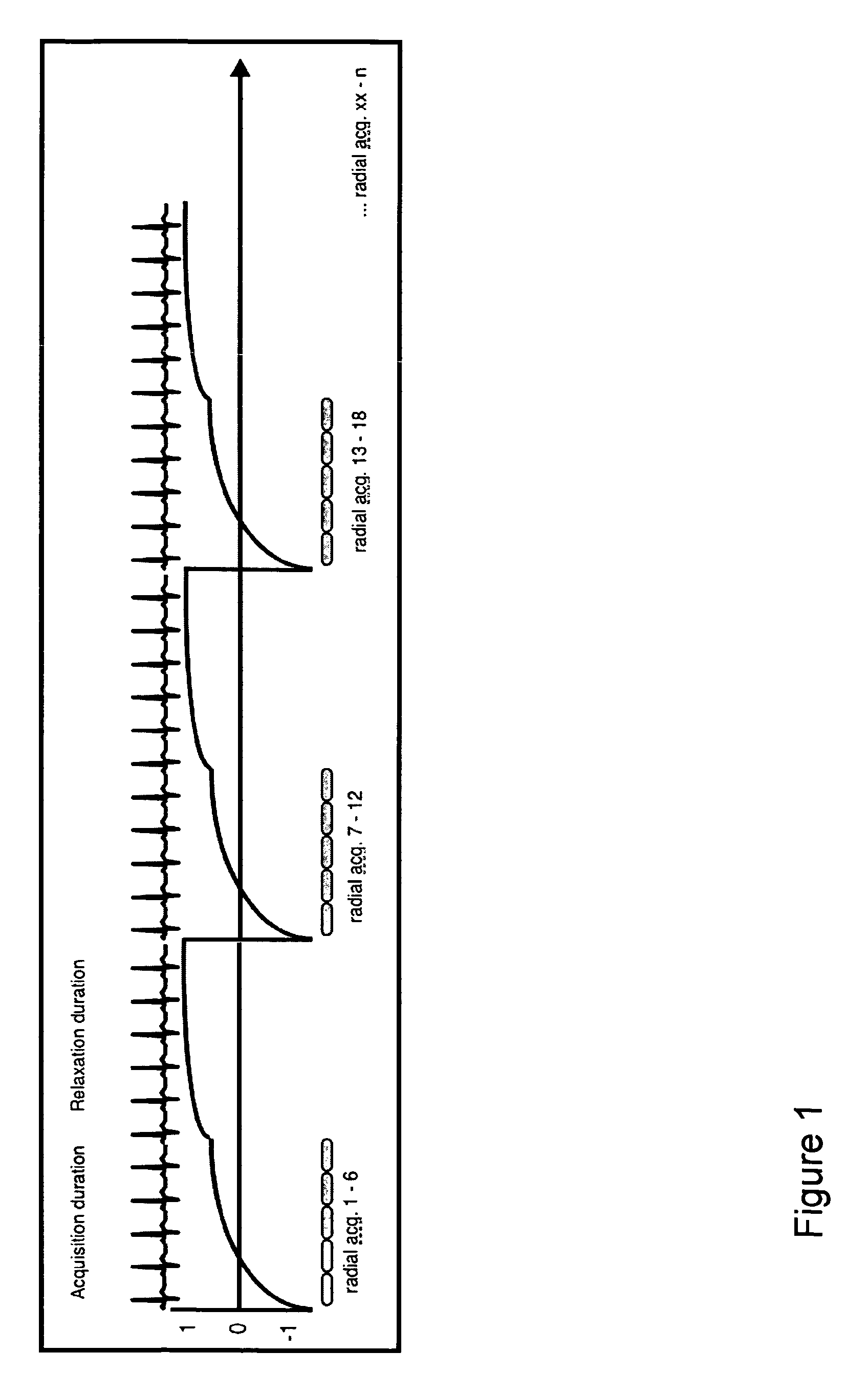Look-locker IR-SSFP for cardiac MR imaging with simultaneous generation of cardiac T1 maps, cine images and IR-prepared images
- Summary
- Abstract
- Description
- Claims
- Application Information
AI Technical Summary
Benefits of technology
Problems solved by technology
Method used
Image
Examples
example 1
Methods:
[0055]The method of the invention combines an adapted segmented, retrospectively gated, IR-prepared Look-Locker type pulse sequence with a multimodal reconstruction framework.
Pulse Sequence Details:
[0056]FIG. 1 illustrates the pulse sequence scheme. After an ECG-triggered non-selective (adiabatic) inversion pulse, n radial profiles of the first phase of the cardiac cycle are read out by a non-balanced steady-state free precession (SSFP) sequence, immediately followed by the read-out of the same n radial profiles of the second phase of the cardiac cycle and so on for a predefined period of time (“acquisition duration”). Upon completion of a predefined waiting period (“relaxation duration”), the next set of n radial profiles of the first phase of the cardiac cycle is read out, immediately followed by the same next set of n profiles of the second phase of the cardiac cycle and so on. The number of cardiac cycles (cc) covered by each acquisition step is given by cc=acquisition d...
example 2
Materials and Methods
[0067]Animal studies were approved by the local animal care committee and performed according to Good Laboratory Practice guidelines.
[0068]All experiments were carried out on a whole-body 3 Tesla MR system (Achieva, Philips Medical Systems, Best, The Netherlands) equipped with a QuasarDual gradient system (80 mT / m, 200 mT / m / ms slew rate) and a 70 mm solenoid coil for rat hearts.
Pulse Sequence Scheme
[0069]FIG. 4 shows the pulse sequence scheme for fully sampled data sets (top) and reconstruction of multi-modal images (a-c). FIG. 5 illustrates the principles of “temporal undersampling”, which was implemented to accelerate the acquisition.
[0070]Reconstruction of the acquired image data was performed using a customized reconstruction framework (ReconFrame, Gyrotools, Zurich, Switzerland) implemented with Matlab (The MathWorks, Natick Mass., USA). For T1 maps, 3-parameter curve fitting was performed for each pixel as used for standard Look-Locker pulse sequences usin...
PUM
 Login to View More
Login to View More Abstract
Description
Claims
Application Information
 Login to View More
Login to View More - R&D
- Intellectual Property
- Life Sciences
- Materials
- Tech Scout
- Unparalleled Data Quality
- Higher Quality Content
- 60% Fewer Hallucinations
Browse by: Latest US Patents, China's latest patents, Technical Efficacy Thesaurus, Application Domain, Technology Topic, Popular Technical Reports.
© 2025 PatSnap. All rights reserved.Legal|Privacy policy|Modern Slavery Act Transparency Statement|Sitemap|About US| Contact US: help@patsnap.com



